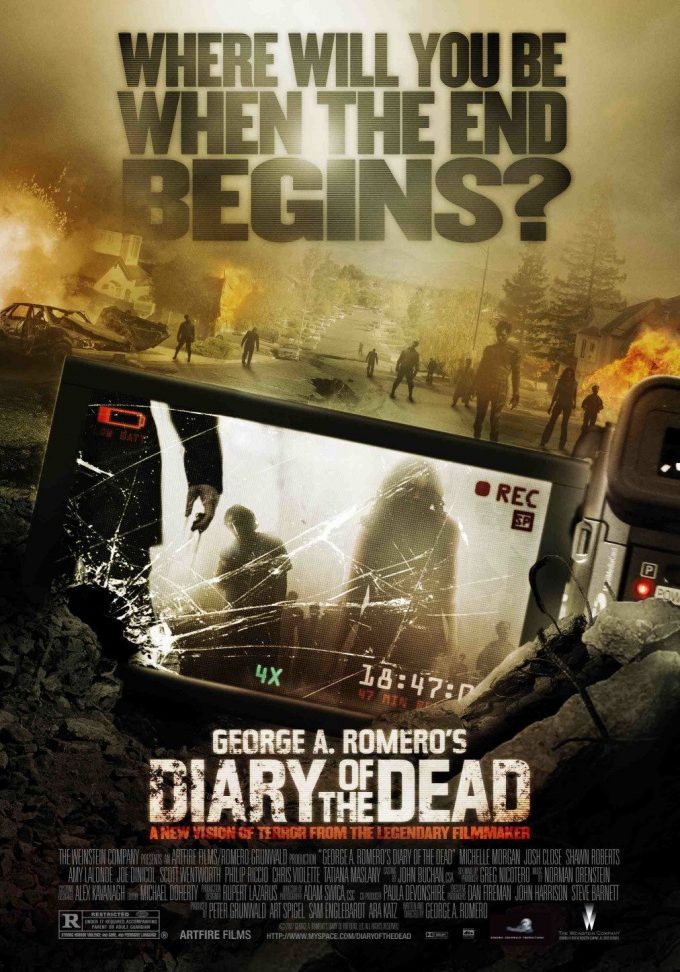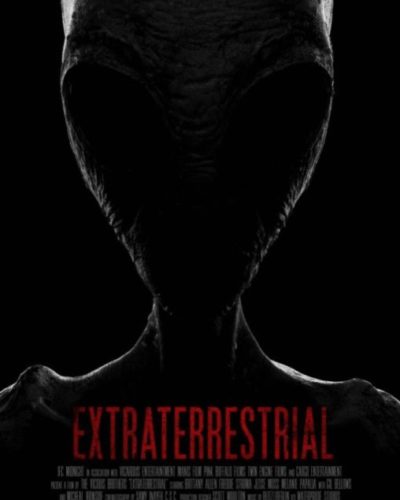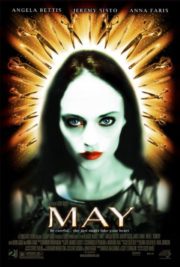“When the Dead Walk, the Living Will Fill Their Diaries”
George Romero’s “Diary of the Dead,” released in 2007, marks a return to his undead roots, reinventing the zombie genre for a new generation obsessed with media saturation and the truth behind the camera. This film chronicles a group of film students who are attempting to make a horror movie, only to find themselves in the middle of a real zombie apocalypse. With the dead walking, the living retreat to the familiar glow of their screens, documenting their struggle to survive.
Nightmare in a Digital Age
“Diary of the Dead” crafts its atmosphere and tone through the same lens as the characters’ cameras, creating suspense from a first-person perspective. This choice allows the film to explore a sense of foreboding that feels personal and immediate. Romero experiments with a documentary-style format, which, coupled with a minimalistic approach to lighting and color, enhances the reality of the narrative.
Camera angles and the ‘found footage’ aesthetic are not just visual gimmicks but are also integral in building tension and fear. Unique shots, such as a camera attached to a mace as it swings toward zombie skulls, stand out both in their creativity and their capacity to immerse—you see what the characters see, and it’s hauntingly real.
The soundtrack and sound effects are fundamental components of the film’s horror. Sharp, abrupt noises juxtaposed against moments of unsettling silence work seamlessly with the visuals to keep viewers on edge. In this film, sound is a herald of dread; sometimes what you hear is far more terrifying than what you see.
Living Characters, Undead Emotions?
The performance of the cast in “Diary of the Dead” is a mixed bag, their portrayals ranging from wildly convincing to oddly detached. Characters’ believability is often interrupted by dips into horror clichés, though one must wonder if this is another of Romero’s social commentaries—perhaps even the living can become as one-note as the undead in times of crisis.
The young actors carry the story as best as they can, with some standouts that bring genuine emotion and human conflict to the forefront, contributing substantially to the overall sense of horror.
Fright Tactics and Subgenre Romp
Romero manages to blend various types of horror elements within “Diary of the Dead.” It is part psychological as the characters grapple with the collapse of society and their morality; part supernatural with the walking dead; and sprinkled with a dose of body horror. However, the film’s noticeable reliance on sudden shocks and gore might not sit well with every horror enthusiast.
The methods used to frighten the audience sometimes lean heavily into shock value, which can undermine the more cerebral horror the narrative hints at. While the execution is competent, it can feel like Romero is checking boxes, rather eclectic than focused.
Moreover, beneath the carnage and chaos, “Diary of the Dead” offers a commentary on voyeurism, desensitization, and the obsession with recording events rather than actively participating in them. These societal critiques provide an undercurrent that can potentially elevate the film for a thoughtful viewer.
Dead on Arrival or Immortal Classic?
Determining the effectiveness of “Diary of the Dead” as a horror movie is challenging. It certainly has moments that shock and unsettle, paired with social commentary that gives the narrative some weight. Yet, it can feel like a toilsome trek through familiar territory for those steeped in the genre.
This film may appeal to die-hard Romero fans and those interested in seeing a pioneer’s take on modern horror tropes, but casual viewers might find it less groundbreaking. Compared with his earlier works and contemporary entries like “[REC]” or “Cloverfield,” “Diary of the Dead” feels like an interesting yet flawed experiment.
In conclusion, “Diary of the Dead” has its share of strengths and weaknesses. It’s commendable for its unique blend of storytelling techniques and underlying messages but may falter in consistently delivering genuine scares. Recommended with caution, it’s a piece more for those looking for commentary wrapped in horror rather than horror outright. Viewer discretion is advised for graphic content and potentially triggering themes of death and violence. Whether this diary is worth an entry in your horror collection, that’s a narrative you’ll have to script yourself.




